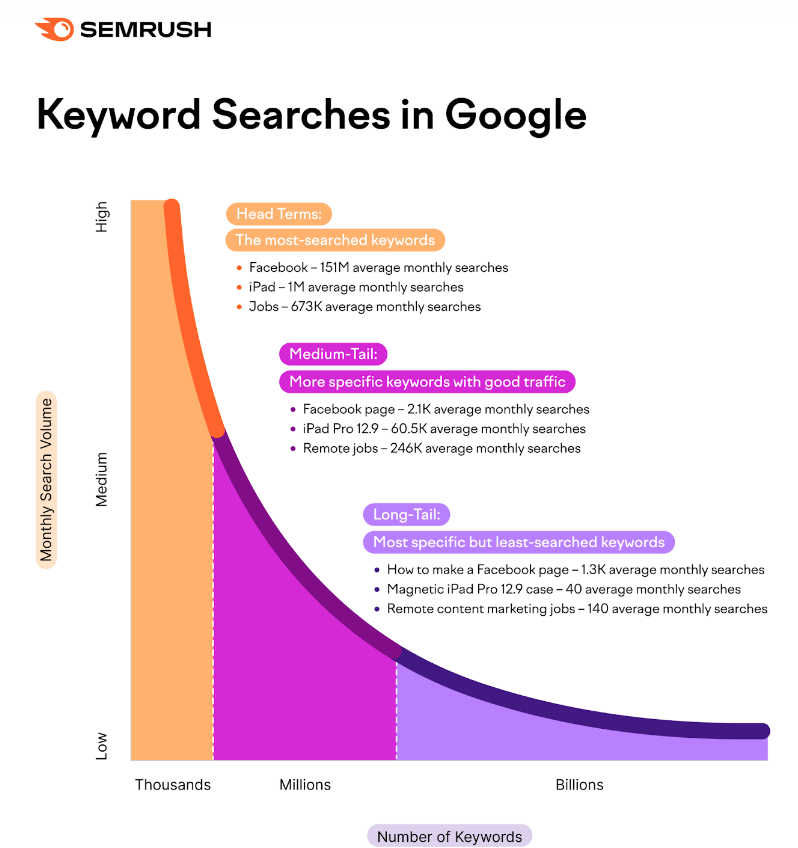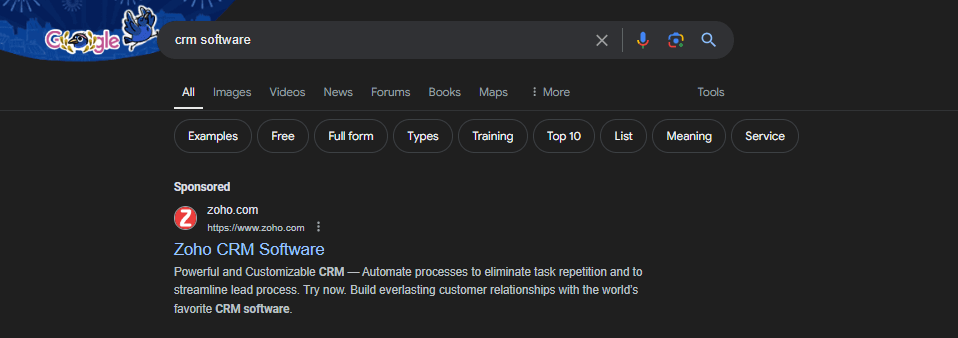The SaaS market has been growing rapidly in recent years and is expected to reach $317 billion worldwide [1] by the end of this year. With such significant potential revenue, your SaaS company might need an extra boost, such as leveraging pay-per-click advertising (PPC ads).
With an average return on investment (ROI) of 200%, [2] PPC advertising is a promising option to attract leads. As an award-winning SaaS PPC Agency, NUOPTIMA has extensive experience with PPC and other forms of digital marketing. Today, we’ll guide you through setting up an effective PPC marketing campaign for your SaaS company.
In this post, you’ll also find a calculator to help you determine the costs of PPC. Without further ado, let’s get started.
Understanding PPC for SaaS
PPC for SaaS is a powerful advertising strategy that companies offering software-as-a-service products use to drive more traffic to landing pages and encourage software purchases, sign-ups, or trials. Through pay-per-click campaigns, these companies effectively promote their cloud-based software to reach a wider audience and drive growth.
When it comes to cloud computing, there are three major distribution models you should know about:
- Infrastructure as a Service (IaaS): This is the distribution of infrastructure resources, including storage, networking, and virtualization, enabling users to run heavy applications and workloads on the cloud.
- Platform as a Service (PaaS): PaaS refers to the delivery and management of hardware and software resources for developers and IT teams. PaaS allows them to develop, run, and manage applications through the cloud.
- Software as a Service (SaaS): Software distributed over the Internet, usually for a monthly fee. Most SaaS products are used directly through a web browser, so users don’t need to install or download anything.
SaaS is a great model for companies of all sizes to host and distribute software to Internet users. Large companies tend to host the applications themselves, while smaller vendors usually depend on third-party providers for hosting.
Many B2B and B2C businesses use SaaS software, from entertainment to advanced IT tools. According to Fortune Business Insights, the market is expected to surpass $1.2 billion by 2032.[3]
PPC is a marketing strategy where companies pay for every click their ad receives. PPC ads typically appear at the top of search engine results pages (SERPs) and are marked as sponsored ads. The ranking of PPC ads depends on factors like keywords, bids, and the landing page.
Whenever someone searches for a keyword you selected, Google checks your ad data, including keywords, bids, landing page, and ad quality. Your quality score compared to the competition determines if your ad will be displayed at #1 or not shown at all.
Why is PPC Important for SaaS Companies?
PPC allows SaaS businesses to instantly appear at the top of SERPs and capture the attention of the right customers. Business Insider reports that 6 out of 10 mobile users [4] click on a PPC advertisement at least once per week.
PPC isn’t just about visibility. For a SaaS company, the primary goals of PPC marketing are faster ROI and increased user conversions, which heavily depend on the landing page.
Compared to traditional companies, some key differences in PPC for SaaS companies include:
- Keywords: It’s crucial to focus on appropriate keywords for your SaaS product or service. SaaS companies compete for niche and relevant keywords.
- Demographics: With PPC, you can segment users and target groups based on location, age, language, etc.
- Sales Cycle: Traditional companies usually sell products quickly, but SaaS customers take longer to evaluate before purchasing. SaaS companies need different ad messaging to incentivize customers.
- Landing Pages: SaaS companies must create landing pages with comprehensive details about their offerings to cater to the extended sales process.
PPC allows you to track metrics such as conversion rates, click-through rates (CTR), and cost-per-acquisition (CPA) to determine the effectiveness of your marketing campaign. Knowing which ads perform well enables you to optimize them, ensuring you get the most out of your marketing budget.
This advertising tactic is also great for SaaS companies trying to establish themselves in the market. Not only will a PPC campaign give you a great surge of traffic over a short period, but it will also showcase your brand to first-time users. Google research indicates that PPC ads can boost your business’s brand awareness by 80%. [5]
Essential PPC Strategies for SaaS Companies
Every marketing and advertising tactic involves strategic planning; read our SaaS growth marketing strategies for more. While PPC, on the surface, looks straightforward, different niches require different advertising approaches, and PPC for SaaS is no different.
. There are certain things you can do to ensure your PPC campaign goes great and you grow your business. Here are different PPC strategies to help you expand your company.
Comprehensive Keyword Research
PPC advertising has the potential to reach a vast audience, connecting you with millions of people. However, if your ads target the wrong audience, you will not achieve the desired outcomes from your campaigns. In the end, you’ll just waste your ad budget.
That’s why keyword research is crucial for your PPC strategy. Developing a comprehensive plan for your keyword bidding strategy allows you to optimize your ad copy for each target group. Your ad copy must speak directly to consumers and their needs if you want them to click and convert.
If you’ve never researched keywords, we got you. All the tools are free, so don’t worry about that. Here’s how to research keywords in five steps:
Step #1: Brainstorm Keywords
- Create a Google Doc: Brainstorm a few potential search terms and put them all in a Google Doc. Consider your target audience and what they might search for.
- Use Google Auto-Fill: To get keyword ideas, you can start by using Google’s auto-fill function. Simply type in phrases that relate to your business and product. For instance, if you type in “project management software,” Google might suggest “project management software for small companies.”
Step #2: Use Google Ads
- Access Keyword Planner: You don’t have to pay for a premium tool to start with keyword planning. All you need to do is go to the Google Ads dashboard and navigate to Tools & Settings → Planning → Keyword Planner.
- Start Generating Ideas: There are two ways to generate keywords. You can enter a few keywords and wait for Google results, or you can enter a website, and Google will look for keywords related to the content.
Step #3: Keyword Volume and Intent
- Assess Search Volume: Ensure your keywords and search volume are sufficient to justify your potential ad spend. If you have a PPC budget, you want to stick to it, right?
- Identify Negative Keywords: Look at the keywords and analyze buyer intent. Exclude keywords with poor buying intent. For example, if the main keyword is “project management software,” you don’t offer free products. Then, you should exclude all keywords with the word “free.”
Step #4: Organize Keywords into Ad Groups
- Group by User Intent: Place keywords with similar intent in the ad group. For example, “project management software” and “project planning software.”
- Separate Different Intents: Create distinct ad groups for different user intents, such as “project management software” vs. “time tracking software.”
Step 5: Refine and Optimize
- Narrow Down Choices: Select the most relevant keywords with the best chance of converting. Look for medium-volume, low-competition keywords—basically, the ones that can attract decent traffic without costing a fortune.
- Adjust Based on Budget and Volume: You can also start with low-volume, high-conversion keywords. Start with tighter targeting and expand based on performance and budget.
Utilizing Long-Tail Keywords
Some keywords have explicit intent, low search volumes, and high conversion rates—these are called long-tail keywords.
Consumers who use them are more likely to purchase, fill out a form, or contact an SaaS company. The term “long tail” refers to the “tail” at the end of the demand curve.
Investopedia defines the demand curve [6] as a “graphical representation of the relationship between the price of a good or service and the quantity demanded for a given period.”

Because of their targeted nature, long-tail keywords can, when aggregated, drive a lot of traffic to your landing pages and conversions. However, Long-tail PPC keywords are seldom searched phrases.
As Semrush research shows, long-tail keywords make up most searches on the Internet.
Let’s look at a few reasons why you should target these keywords:
- Lower Competition: Long-tail keywords have less competition, making ranking easier than short-tail keywords.
- Higher Conversion Rates: Searchers using long-tail keywords are more specific, leading to higher conversion rates.
- Ranking for Short-Tail Keywords: Long-tail keywords often include short-tail keywords, boosting rankings for both types.
Long-tail keywords provide a potential solution if you’re working on a modest budget or just looking to save a couple of bucks. Since not many people are bidding on specific long-tail keywords, they provide amazing ROI.
Crafting a Great Ad Copy
Advertising copy, or simply ad copy, is written or spoken text in an ad designed to grab the consumer’s attention and interest them in a product. Any text written for an advertisement is considered ad copy.

To the text read during this Pepsi spot…
An ad copy should do the following:
- Explain what your brand and product are all about
- Show what the consumers can expect from you
- Convince the consumer to take action like buy or find out more about your product
Every product is different, so is every copywriter. It’s always smart to follow a strategic approach creating ad copies, such as:
- You Need a Good Hook: Identify what makes your SaaS product unique, then emphasize it in your copy to capture the attention of people Googling.
- Check Out the Competition: Examine your competitors and gain insight into their marketing strategies for similar products. By implementing this strategy, you will effectively distinguish your ad copy.
- Know Your Audience: Also, research what attracts your audience the most. Discover their biggest pain points and offer your product as a solution.
- Use Headline-Description-CTA Template: Structure your ad copy with a catchy headline, informative description, and a compelling call to action for maximum impact.
- Add Ratings and/or Social Proof: You can use ratings, testimonials, and reviews of your SaaS to increase the consumers’ confidence in your product.
Let’s examine this Zoho CRM ad copy below.

This particular ad builds on the keyword “CRM software” and it aims to promote Zoho’s software to companies that need to carefully manage their customer relationships.
It has a clear tagline – powerful and customizable CRM – as well as a benefit-oriented copy, which gives the consumer a quick overview of what they can expect. It’s short, concise, and pretty informative.
Designing High-Converting Landing Pages
A PPC landing page is a webpage specifically designed to make leads purchase a product or subscribe for a service. It’s the last point of contact before the purchase, so it needs to mirror the consumer’s behavior, offer a solution to their problems, and make them take quick action.
“Addressing pain points” is a commonly used phrase in PPC advertising. That’s only because it’s really, REALLY important to show your audience how your SaaS product will help them.
Here are a few elements of an ideal PPC SaaS landing page:
- Hero: The hero grabs the attention immediately and ensures that the visitors understand the main offer at a glance.
- Headline: A direct, well-written headline quickly informs users they are in the right place, increasing the chances they stay.
- CTA: An enticing CTA button guides users to take the next step, preventing them from leaving without engaging.
- Contact Form: Streamlines the onboarding process and fosters engagement by gathering visitor information.
- Social Proof: Including logos and testimonials of previous, well-known clients builds trust with potential clients and gives your brand credibility.
You could include a demo video to showcase your product and ensure the leads convert. Doing so lets you showcase your SaaS product and help users understand how it works without commitment.
Studies have shown that including a single video on a landing page can increase conversions by up to 80%. [7] Videos capture attention, simplify complex information, and encourage consumers to spend more time on the page.
Read our extensive article on SaaS landing pages for optimization tips and examples with high conversion rates.
Optimize for Cross-Device Conversions
It was big news when mobile traffic overtook desktops for the first time in 2017.[8] It also signaled a new era where customer satisfaction hinges on delivering an exceptional experience across all devices.
Today, over 60% of Internet traffic comes from mobile devices. You better believe people looking for software solutions browse the web from their smartphones.
That’s why your ads must be readable and pristine on all screen sizes and types, and your landing and product pages should be responsive to mobile devices. A lead probably won’t convert if they can’t click on an element of your page without pinching all over the screen and trying to zoom in.
Users consider over 60% of the top websites “mediocre.”[9] So, you need to provide valuable content and optimize your content and website to stand out from the crowd.
Common Mistakes in SaaS PPC Campaigns
One of the main benefits of PPC is that you don’t have to wait for ages to see results. Is it a cause for concern if you’re not seeing results after a week or so? Is it worth considering a fresh approach and making significant changes to your PPC campaign? Not necessarily.
Certain small but noticeable mistakes people often make hinder their performance.
Targeting Too Narrowly
Too often, SaaS organizations pick a small target audience when setting up their campaigns.
For example, you don’t want to set up a campaign that will target owners of a business with 50 to 250 employees aged 45 to 65 because:
- You’d be presenting your ads to a small pool of individuals;
- Narrow target audiences usually have high CPC costs due to high competition.
Competition isn’t the only problem. There’s also the fact that companies like Google make a lot of money from advertising. In 2023, Google brought in $307 billion in profits. The tech giant made $237 billion off ads alone. [0]
Their main objective is to maximize ad sales. That’s why they impose higher CPC costs on those who use narrow targeting, effectively penalizing them.
Optimizing for Bottom of the Funnel Too Early
You need to optimize your PPC campaign carefully at every stage of the buyer’s journey. Too often, SaaS companies try optimizing for their ultimate goal, like getting users to sign up for a demo of their product right from the start.
However, this approach rarely works because collecting enough data to differentiate a good lead from a bad one takes time.
Without enough data, Google Ads might serve your ads to the wrong audience, which may not be interested in signing up for a demo.
This will impact your budget and campaign because you’ve optimized your landing page for direct conversions.
Instead, you should focus on engagement metrics like blog post clicks and video views. That will
Lack of Customer Segmentation
Customer segmentation is vital for SaaS companies’ marketing and advertising strategies. It allows companies to tailor their marketing and PPC campaigns to specific customer groups based on behaviors and shared characteristics.
If you’ve never used customer segmentation, it’s time to start. Companies that employ segmentation reportedly increase their revenue by 760% [10]. You need to create more targeted and relevant ads to outperform the competition.
So, how do you segment your target customers? It’s not that complicated. Here are a few ways B2B companies segment customers:
- Firmographic Segmentation: This involves grouping based on company size, revenue, and number of employees.
- Geographic Segmentation: This involves segmenting customer based on their city, state, or country.
- Value-Based Segmentation: Segmenting customers based on their potential economic value using analytics like customer lifetime value and acquisition costs.
- Needs-Based Segmentation: This involves grouping customers according to their needs and the benefits they seek from SaaS businesses.
- Technographic Segmentation: This involves researching and categorizing customers based on their devices and software.
We’ve just scratched the surface of segmentation. Read our blog post on SaaS customer segmentation to help you learn more.
Measuring and Analyzing SaaS PPC Performance
Every visitor’s click on your landing page can give you loads of valuable data to help you further optimize your PPC campaign. Are your headlines attention-grabbing? Are your CTAs in the right spots? Are your visitors converting?
Answer these questions if you want to optimize your PPC performance. Here are a couple of key metrics you should track and analyze.
1. CPC (Cost-Per-Click)
Formula: Total Cost ÷ Number of Clicks = CPC
Example: Spending $6,000 for 300 clicks results in a CPC of $20.
The first metric is the simplest. CPC is the amount you pay every time a lead clicks on your ad. You calculate it by dividing the ad costs by the number of clicks. Of course, the number won’t be rounded up in most situations, as in our example above. That’s why you should use our PPC calculator to make things easier. Calculating CPC will help you see the clicks needed to lower your PPC costs and optimize your budget.
2. CTR (Click-Through-Rates)
Formula: Number of Clicks ÷ Number of Views = CTR
Example: 15 clicks out of 300 impressions give a CTR of 5%.
Tracking the click-through rate allows you to assess the number of people who view and subsequently click on your ad. One way to determine this is by calculating the click-through rate, which is the number of clicks your ad received divided by the number of times it was viewed
So, what is a good CTR? It depends on your industry [11]. For example, the travel and hospitality industry has an average CTR of nearly 4.7%, while the technology sector has less than 2.1%.
3. CAC (Customer-Acquisition-Costs)
Formula: Total Cost of Sales and Marketing ÷ Number of New Customers Acquired = CAC
Example: If a company spends $50,000 on sales and marketing in a month and acquires 200 new customers, the CAC is $250.
Acquiring new customers isn’t cheap. That’s why you must always pay close attention to your customer acquisition costs. You can calculate your sales and advertising costs by dividing them by the number of customers you have acquired. High CAC numbers can show inefficiencies in your campaign. By analyzing your CAC, you can find holes in your PPC strategy, allocate the budget more carefully, and, ultimately, improve ROI.
4. CPA (Cost-Per-Action)
Formula: Total Ad Cost ÷ Number of Conversions = CPA
Example: With an ad cost of $4,800 and 600 conversions, the CPA is $8.
This one is a bit complicated. Cost-per-action measures advertising costs based on achieving a specific goal, such as acquiring a new customer. You can calculate CPA by dividing ad costs by the number of conversions within a set period. Keep the CPA as low as possible. If it’s high, there might be a problem with your targeting or content quality.
5. ROAS (Return-on-Ad-Spend)
Formula: Total Revenue ÷ Total Ad Spend = ROAS
Example: Generating $10,000 in revenue from $500 spent gives a ROAS of 20.
Some keywords have high PPC costs because of the intense competition. You can spend tens of thousands of dollars on PPC in certain cases. The saying goes, you have to spend money to make money, sure. But how much money have you made off your PPC campaign? Take your revenue and divide it by the amount you spent on PPC during a certain period. Evaluate your ad spending and adjust your plans for the future.
Conclusion
Reaching the right consumers for your SaaS product might take a while. But thanks to PPC, you can speed up the process significantly. If you follow the basic rules, bid on the right keywords, and measure the performance of your campaign, you’ll see success in no time.
Are you ready to maximize your PPC revenue and expose your SaaS to thousands of new clients? You’re in the right place.
NUOPTIMA offers PPC for SaaS, among other services that can help you build a strong business. When you partner with NUOPTIMA, you receive PPC campaigns that deliver actual results, allowing you to get better results and spend less money.
Book a call with us today and start working on your new PPC campaign with NUOPTIMA.
FAQ
PPC for SaaS is an advertising strategy where companies that produce Software-as-a-Service products use Pay-Per-Click tactics to promote their software. PPC campaigns aim to drive traffic to landing pages, and increase sign-ups, product trials, and profits. Unlike SEO, which takes time, SaaS companies can get the attention of potential customers instantly using PPC advertising.
Effective PPC strategies for SaaS companies include comprehensive keyword research, targeting long-tail keywords, and crafting compelling ad copy emphasizing the product’s ease of use and low entry cost. It is also crucial to create high-converting landing pages with clear offers and strong calls to action. Regularly analyzing and optimizing ad performance based on metrics like CTR and CPA helps maximize the marketing budget.
Common mistakes in SaaS PPC campaigns include targeting too narrowly, which limits ad impressions and increases costs, and optimizing for bottom-of-the-funnel conversions too early, which doesn’t allow the platform to learn and improve ad targeting. Ignoring negative keywords can also waste a budget on irrelevant clicks. Segmenting the audience correctly and giving campaigns time to gather data before making adjustments is essential.
Sources:
- https://www.fortunebusinessinsights.com/software-as-a-service-saas-market-102222[1]
- https://economicimpact.google/methodology/[2]
- https://www.fortunebusinessinsights.com/software-as-a-service-saas-market-102222[3]
- https://markets.businessinsider.com/news/stocks/60-of-consumers-click-on-mobile-ads-at-least-once-a-week-1027729266[4]
- https://www.thinkwithgoogle.com/marketing-strategies/search/search-ads-drive-brand-awareness/[5]
- https://www.investopedia.com/terms/d/demand-curve.asp[6]
- https://www.vbout.com/blog/impact-of-video-content-on-landing-page-conversion-rates/[7]
- https://explodingtopics.com/blog/mobile-internet-traffic[8]
- https://baymard.com/blog/mobile-ux-ecommerce[9]
- https://blog.salesmanago.com/marketing-and-business/top-10-mind-blowing-statistics-about-hyper-segmentation-you-have-to-know-in-2021/[10]
- https://www.wordstream.com/blog/ws/2016/02/29/google-adwords-industry-benchmarks[11]


